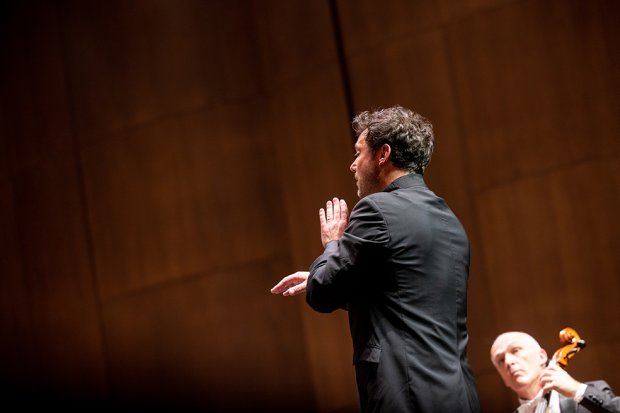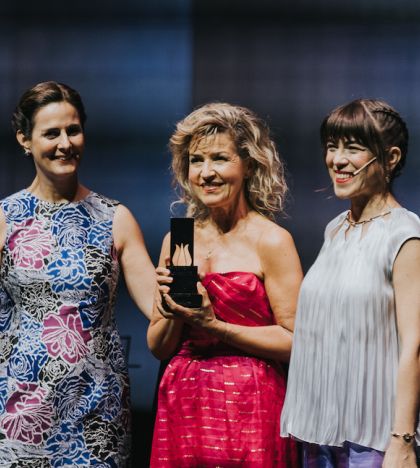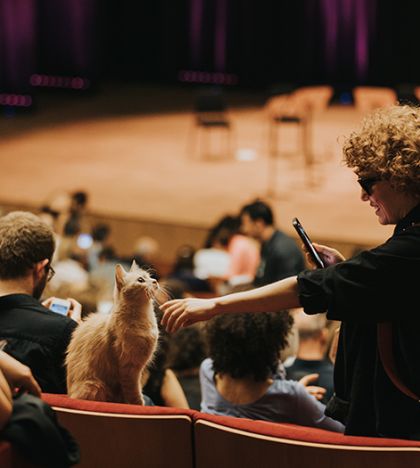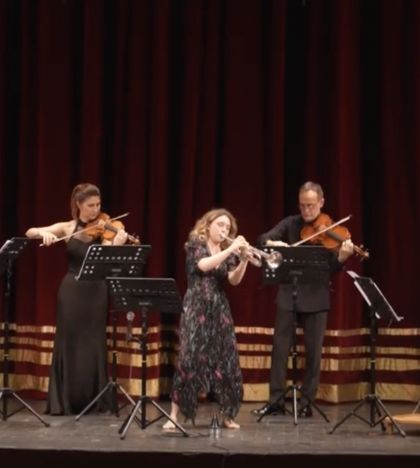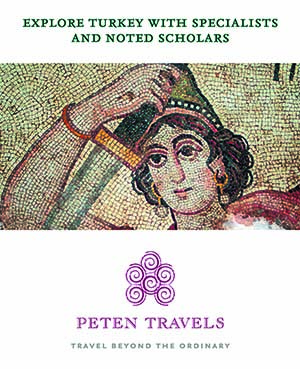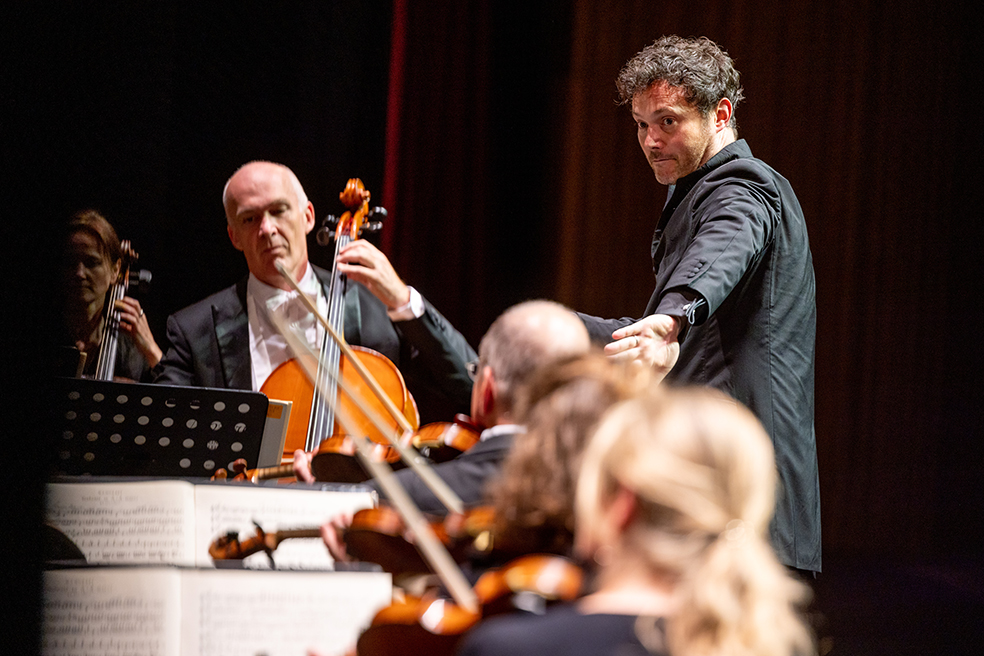
The last of the concerts I attended during the 2023 İKSV Istanbul Music Festival was given by the Mozarteum Orchestra Salzburg, conducted by Matthew Halls, at the Atatürk Cultural Centre on June 16.
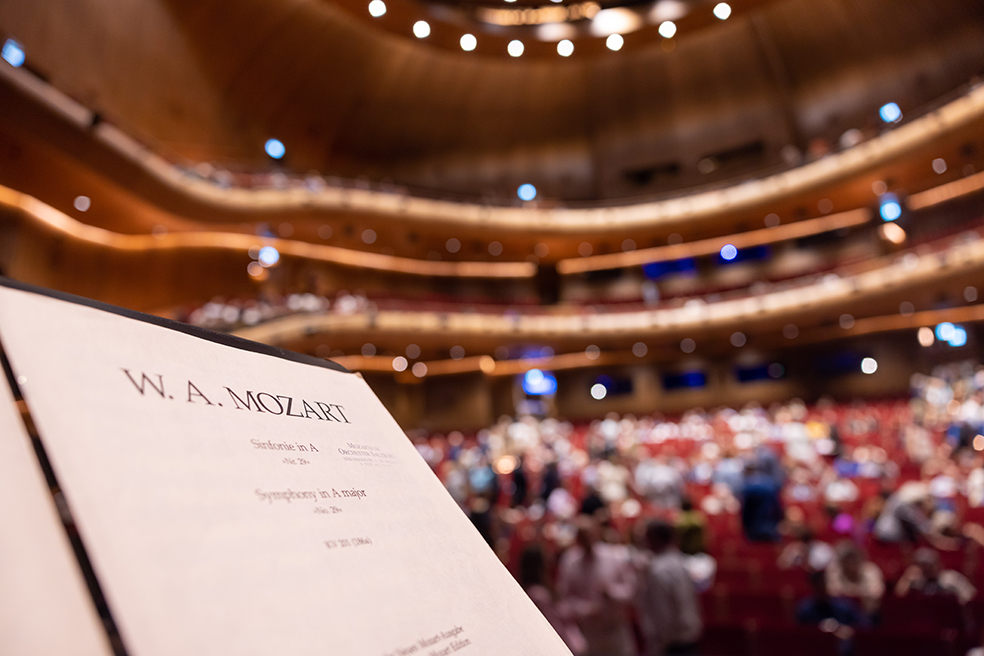
The proceedings began with Mozart’s Serenade No. 13 in G major, K 525, a work popularly known as Eine kleine Nachtmusik. Originally written for a smaller ensemble, it was played on this occasion – as indeed it usually is these days – by the full string orchestra.
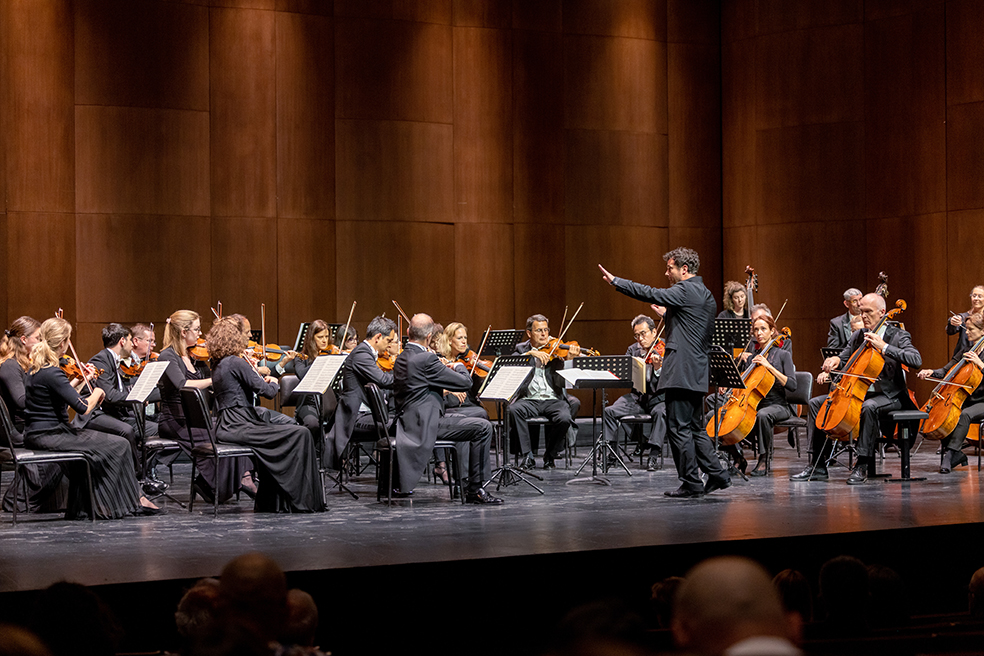
The Serenade No. 13 was composed in 1787, but it is not known for whom it was written. Mozart recorded in his personal catalogue that he had written ‘Eine kleine Nacht-Musik’, but this was probably not intended as a name for the work. The word ‘serenade’, by the way, had originally meant ‘an evening song intended for courtship’, but by the late 18th century it had come to mean ‘a chamber work intended for light entertainment on a social occasion’. It was customary for ensembles to perform serenades in Vienna’s parks and gardens, and writing pieces of this kind became an attractive source of income for composers. Mozart lived in Vienna for the last ten years of his life, and during that time he produced a large number of serenades. This particular one has four movements. The first, a cheerful opener, is marked allegro; the slow second movement, marked andante, is in rondo form, while the third is a minuet and trio (both in 3 / 4 time), and the fourth a lively allegro.
In this recording, which is accompanied by the score, Mozart’s Serenade No. 13 is played by the Academy of St Martin in the Fields, conducted by Neville Mariner.
As a demonstration of his unique style, here is Matthew Halls conducting the Musica Viva Orchestra (an outfit founded in Moscow in 1978 and now directed by Alexander Rudin) in a performance of the last movement of Mozart’s Symphony No. 36 in C major, K 425 – the ‘Linz’.
For the next item on the programme – Mozart’s Violin Concerto No. 4 in D major, K 218, the orchestra was swelled by the arrival of two oboes and two horns, plus a soloist in the shape of Ms Arabella Steinbacher. After the first four bars a scrawny and somewhat dishevelled cat appeared on the right-hand side of the stage. It soon left, however – for no reason I could discern. Certainly there was nothing in the music to take exception to, even for the most demanding feline arbiters of taste.
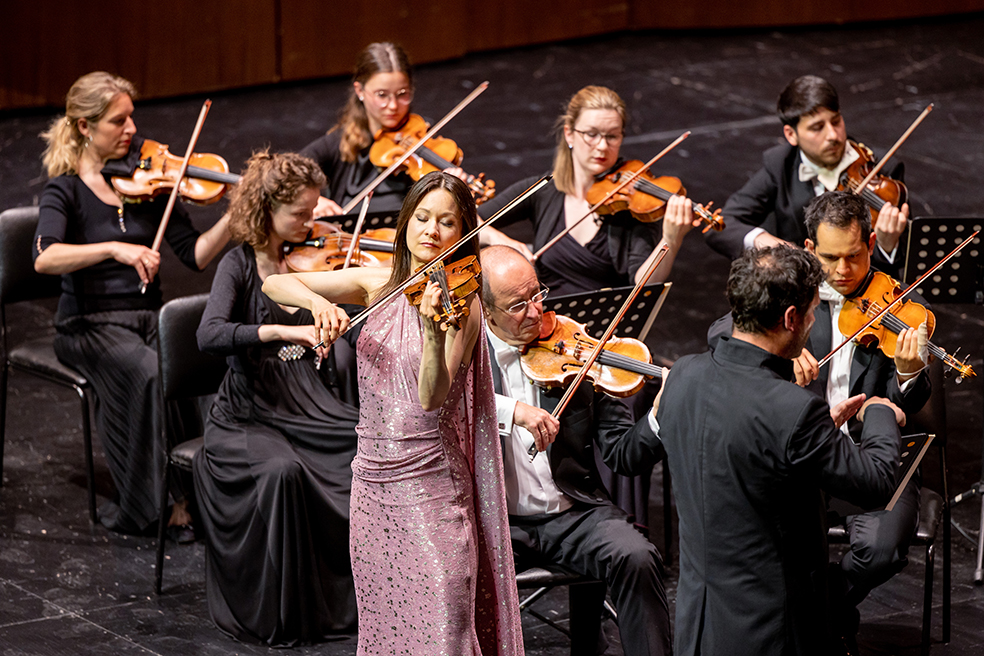
Ms Arabella Steinbacher, born in Munich in 1981 to a Japanese mother and a German father, was tutored at the Munich College of Music by Ana Chumachenco. She won Third Prize in the Joseph Joachim Violin Competition in Hanover in 2000, and the following year was awarded a scholarship to study with Anne-Sophie Mutter’s Freundeskreis (Circle of Friends). Her cadenza in the first movement of the Mozart concerto was technically impressive; the adjectives I wrote in my notebook to describe her tone in the quieter second movement, meanwhile, were ‘sweet’ and ‘dainty’. The slow movement of any work is always a testing ground from the point of view of coordination between the various sections of the orchestra, as well as (of course) between soloist and orchestra, and on this occasion all the entries were confident and perfectly timed, with no raggedness whatsoever. In the third and last movement it was the oboes and horns that shone. Readers will know that as a former horn-player myself I appreciate good horn-playing, and this performance was top-notch. Ms Steinbacher was a hit with the audience, and after playing us an encore she was recalled several times to acknowledge the applause.
Here is a performance of Mozart’s Violin Concerto No. 4 in D major, K 218, by the German violinist Julia Fischer – who like Arabella Steinbacher is a former pupil of Ana Chumachenco – with the London Philharmonic Orchestra, conducted by Thomas Søndergård.
After the interval, we heard Mozart’s Symphony No. 29 in A major, K 201. The Wikipedia entry for this work gives a good general introduction.
An article about this symphony by Ronald Comber (on the ‘Saskatoon Symphony’ website) makes two valuable points – firstly, about the way symphonies in general were regarded at the time when this one was written, and secondly, about the influence on the early Mozart of the Mannheim School, Johann Christian Bach and Joseph Haydn (more about the Mannheim School and JC Bach anon). Here is a link: https://saskatoonsymphony.org/mozarts-symphony-no-29/
This symphony is an example of the style galant – a style in music that was fashionable from the 1720s to the 1770s. Wikipedia tells us that it is marked by ‘a return to simplicity and immediacy of appeal after the complexity of the late Baroque era. This meant simpler, more song-like melodies, decreased use of polyphony, short, periodic phrases, a reduced harmonic vocabulary emphasising tonic and dominant, and a clear distinction between soloist and accompaniment.’ JS Bach’s sons Johann Christian and (up to a point) Carl Philipp Emanuel, as well as Johann Joachim Quantz, are regarded as typical exponents of the ‘galant’ style; the early works of Haydn and Mozart may also be cited in this regard.
In the following performance, Mozart’s Symphony No. 29 is played by The English Concert, conducted by Trevor Pinnock, the ensemble’s founder. Notice the upward-sweeping figure that introduces the return of the main theme in the fourth movement (this comes at 26:14); a figure of this kind is known as a ‘Mannheim rocket’, this being a feature associated with the Mannheim School of composers who wrote for the court orchestra of the Elector Palatine in Mannheim in the latter half of the 18th century. Notice, too, that in this recording the work is played on period instruments that are tuned to a pitch slightly lower than the one that has been almost universally adopted today. As a result, it may seem to you – initially, at least – as if the orchestra have all tuned their instruments to a pitch a little on the flat side. In fact, a general agreement on a standard pitch for orchestral instruments was reached only in 1939, when an international conference was held in London to settle the matter. Before that, instruments had been tuned differently from country to country and from continent to continent.
The Mozarteum Orchestra Salzburg excelled itself in the Mozart symphony. At one point one of the oboes muffed the ending of a trill, though this was hardly noticeable; other than that, I did not notice a flaw of any kind in the performance – and it goes without saying that I thoroughly enjoyed the horn fanfare at the end. As an encore we heard part of the first symphony Mozart wrote – when he was eight years old, and already a celebrity in Europe as a performer. This work, which shows the influence of JS Bach’s son Johann Christian, was in fact composed in Chelsea, London, during the Mozart family’s grand tour of Europe in the summer of 1764.
And so, with a sigh of regret, I left the Atatürk Cultural Centre’s concert hall (which, with its convex, dark red outer casing, resembles an enormous blood-orange), my attendance at the concerts of the 51st İKSV Istanbul Music Festival having come to an end. Mozart was on this occasion – just as much as he was in the 1780s – the perfect accompaniment to a light-hearted June evening. My thanks go to Ms Ayşegül Öneren of the İKSV for providing me with free tickets to the concerts, to the staff who so courteously directed me to my seats at the various venues, and of course to the İKSV management who this year, as always, organised a satisfying programme of high-quality classical music for us to enjoy. Long may the İKSV Istanbul Music Festivals continue! Maşallah ...
All photographs: Mühenna Kahveci, courtesy of the IKSV
Editor's note: We learn that John Shakespeare Dyson's Musical Shares blog has been voted one ot the world's top 100 classical music blogs.

